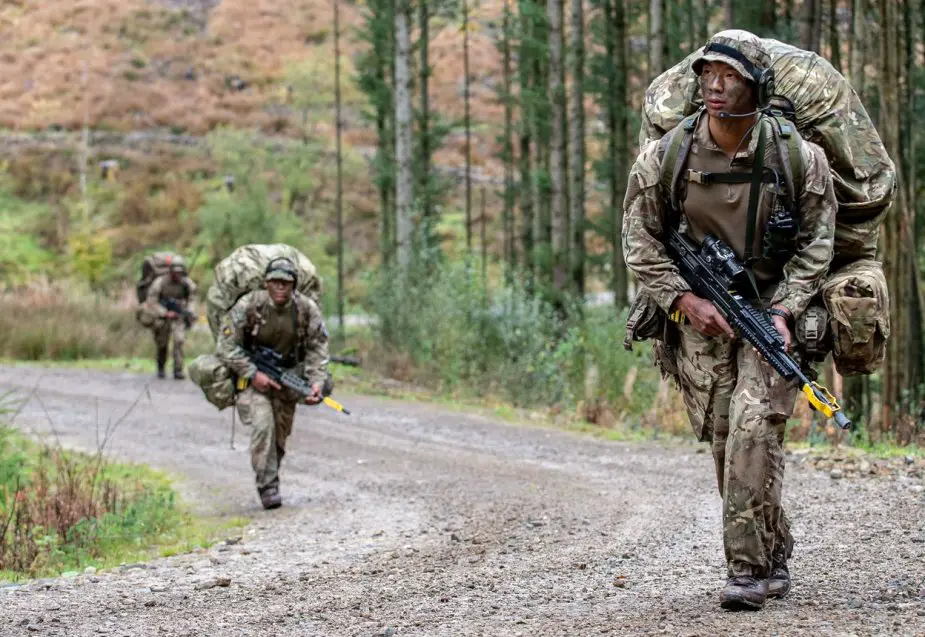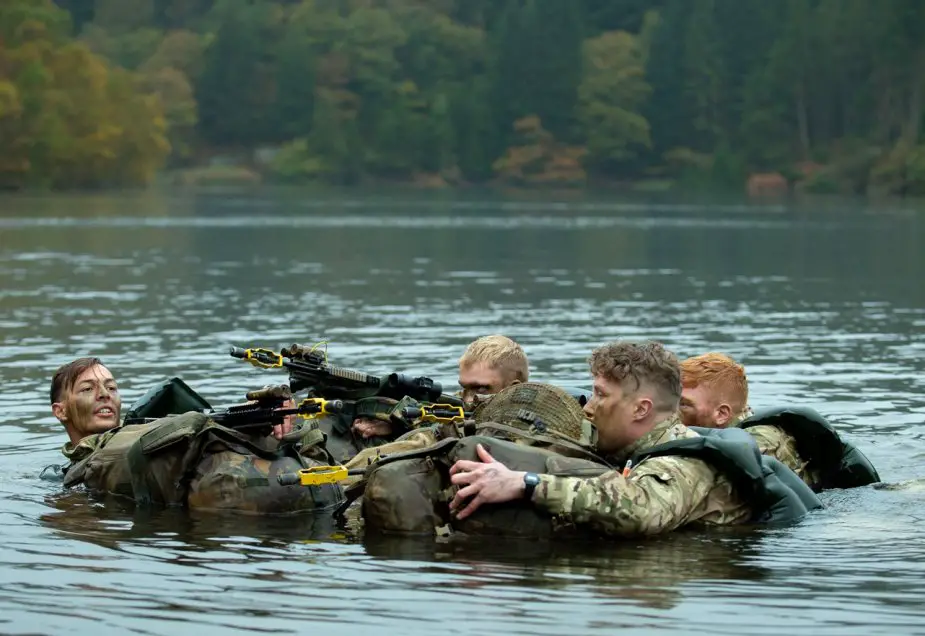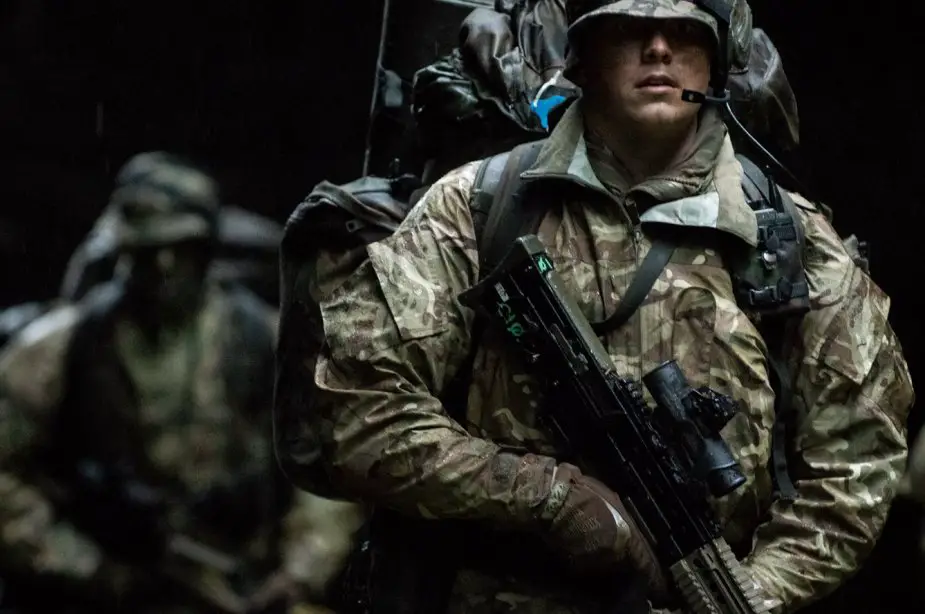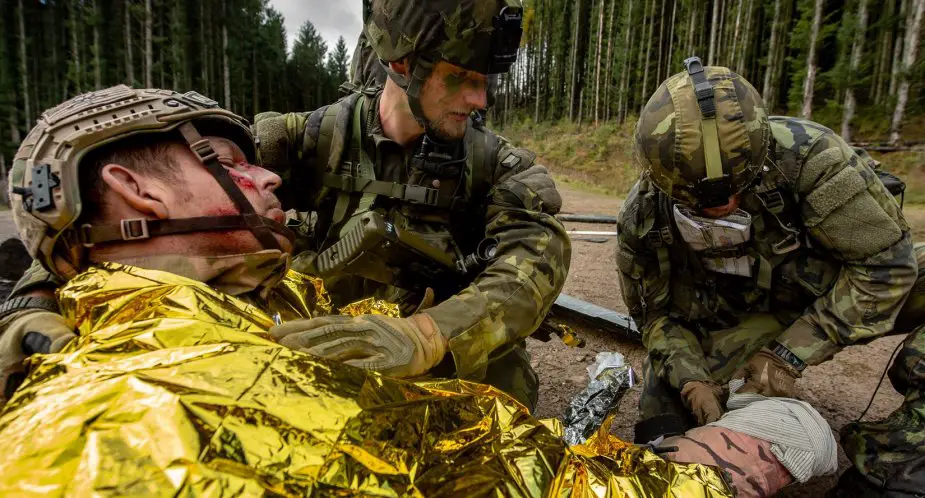Breaking news
Toughest patrolling test of the world marks 60th anniversary.
In the late 1950s and early ‘60s, soldiers stepped into their newly issued British Army footwear known as Boots DMS. They picked up their weapons, packs, tentage and bedding and trudged their way on a marching competition from Hay-on-Wye to Maesteg - a route that covered 74 miles and many of the peaks of the Black Mountains and Brecon Beacons. Back then, it was known as the Cambrian March - a competition for Territorial Army soldiers keen to show their prowess in fitness and map-reading ability.

Exercise Cambrian Patrol has carefully developed into a world-class challenge that attracts the very best of what international armies across the globe have to offer. (Picture source: British MoD)
Today, and in tandem with its 60th anniversary, Exercise Cambrian Patrol has carefully developed into a world-class challenge that attracts the very best of what international armies across the globe have to offer. Over the course of those six decades, lifelong memories have been entrenched into the minds of the tens of thousands of those who have sweated, blistered and heaved their way across the Welsh Black Mountains.
Exercise Cambrian Patrol is an annual event organised and run by Headquarters 160th Welsh Brigade, based in Brecon. Brigadier Alan Richmond is head of the Army in Wales and Exercise Director. He said: “When I took over three years ago we were just starting to shift this event back up to a level we wanted it to be, as an army. We had been on operations in Afghanistan and Iraq for so long that it was time to refocus our aim of enhancing the world-class feel to this exercise and I think we’ve now achieved that, taking it up a notch each year.
“Cambrian Patrol is also a very good gauge to test the basic soldiering skills of units, both Regular and Reserve, in the British Army. It is a 60 km patrol over challenging Welsh terrain, within a fully immersive tactical scenario and any team of 8, with basic soldiering skills, good leadership, navigation and bags of grit and determination can excel. Of course they also have a live enemy and the Welsh weather to contend with! “What is clear today is the esteem to which international armies from across the world hold this event. Many see it as the ultimate patrolling challenge and this year we have 34 countries visiting us to take on the challenge - that’s a record and shows how far this event has come on from the days when it was classed as a march.

Exercise Cambrian Patrol has carefully developed into a world-class challenge that attracts the very best of what international armies across the globe have to offer. (Picture source: British MoD)
“In 1985, General Sir Peter de la Billiere, who was then General Officer Commanding Wales, decided he wanted to re-tune the event and establish it as an exercise in order to test basic military skills. We’ve stayed true to his vision and in the last few years, we’ve really upped the game in terms of the subject matter expertise that we apply to this exercise. For example, if we’re testing basic life-saving skills, we’ve got the British Army’s experts there to design and validate the training and that’s the same whether it be for Chemical Biological Radiological Nuclear drills and all the other disciplines we have on the exercise.
“But also we are now using some of the most state-of-the-art simulation that’s available and again on the basic life-saving skills, the realism of some of the dummies, some of the casualties you find, is what you’d find on a Hollywood film-set, it’s startling. It really does seem absolutely real to the exercising troops and that’s why we’re there now at the standard we aspire to.”

Exercise Cambrian Patrol has carefully developed into a world-class challenge that attracts the very best of what international armies across the globe have to offer. (Picture source: British MoD)
The exercise is unique, world-class and the largest of its kind with some foreign entrants having to claim the right to take part in the UK by winning through their own domestic competition. For example, the Australian Army runs an infantry skills competition called the Duke of Gloucester Cup. Their winning unit then gets to represent the country in Exercise Cambrian Patrol.
Exercise Cambrian Patrol itself began in 1959, when a group of Welsh Territorial Army soldiers designed a weekend training event, featuring long-distance marching over the Cambrian Mountains, culminating in a shooting match on the Sennybridge Training Area.
One of those is Glyn Powell, who, as a Lieutenant in the Territorial Army in 1961 led his team, 638 Light Anti-Aircraft Regiment, Royal Artillery, based in Brecon, to first place after gaining '667.5 marks'. Glyn, 87, now living in Sennybridge but who was also a school headmaster at the time, said: “We trained for three months for that march and you had to pick the right men for the occasion. I’d heard it was a grind and that considerable training was needed. “The absolute key thing was, you had to look after your feet. Some of the boys used to cut holes into the front of their boots when the pain got too much. It was as much a question of mental strength as it was physical. I remember it started in Hay-on-Wye and finished in Maesteg, with a presentation ceremony in Porthcawl. Do you know what, coming down that promenade we had such a feeling of pride. We could go back to Brecon and say, we’ve completed the Cambrian March. To this day, we’ve remained friends for life.”

Exercise Cambrian Patrol has carefully developed into a world-class challenge that attracts the very best of what international armies across the globe have to offer. (Picture source: British MoD)
This year’s event sees more than 130 patrols entered into the mix. On arriving at the Patrol Base, each team of eight soldiers, will be subjected to a thorough check to ensure that they are in possession of the correct kit, equipment and clothing required for the exercise.
Patrol commanders will then be given a set of orders based on a specific scenario involving enemy forces for an onward briefing to members of their patrol. They must prepare for battle and map out a designated route, which they must navigate through, day and night. As they progress they will deal with a set of stands: including casualty evacuation scenarios, dealing with mock improvised explosive device finds, intelligence gathering, seeking protective measures against chemical, biological, radiological and nuclear threats, a water crossing, close-target reconnaissance and others. At the completion of the exercise, each patrol faces a comprehensive debriefing session.
The two-day patrolling mission is a mind-and-muscle sapping 37 miles, carrying full personal kit and equipment weighing in at some 50lbs. The exercise is both mentally and physically demanding, testing all the basic military skills of a modern-day soldier whilst enhancing their leadership abilities, levels of endurance and determination.
Depending on how they have dealt with all of the challenges they are awarded points, for which they will either gain the top gold medal, a silver, bronze or certificate finish. A patrol can complete with five soldiers, taking into account any injuries or other issues that may deplete the team. In this instance, they can only be awarded a certificate.


























